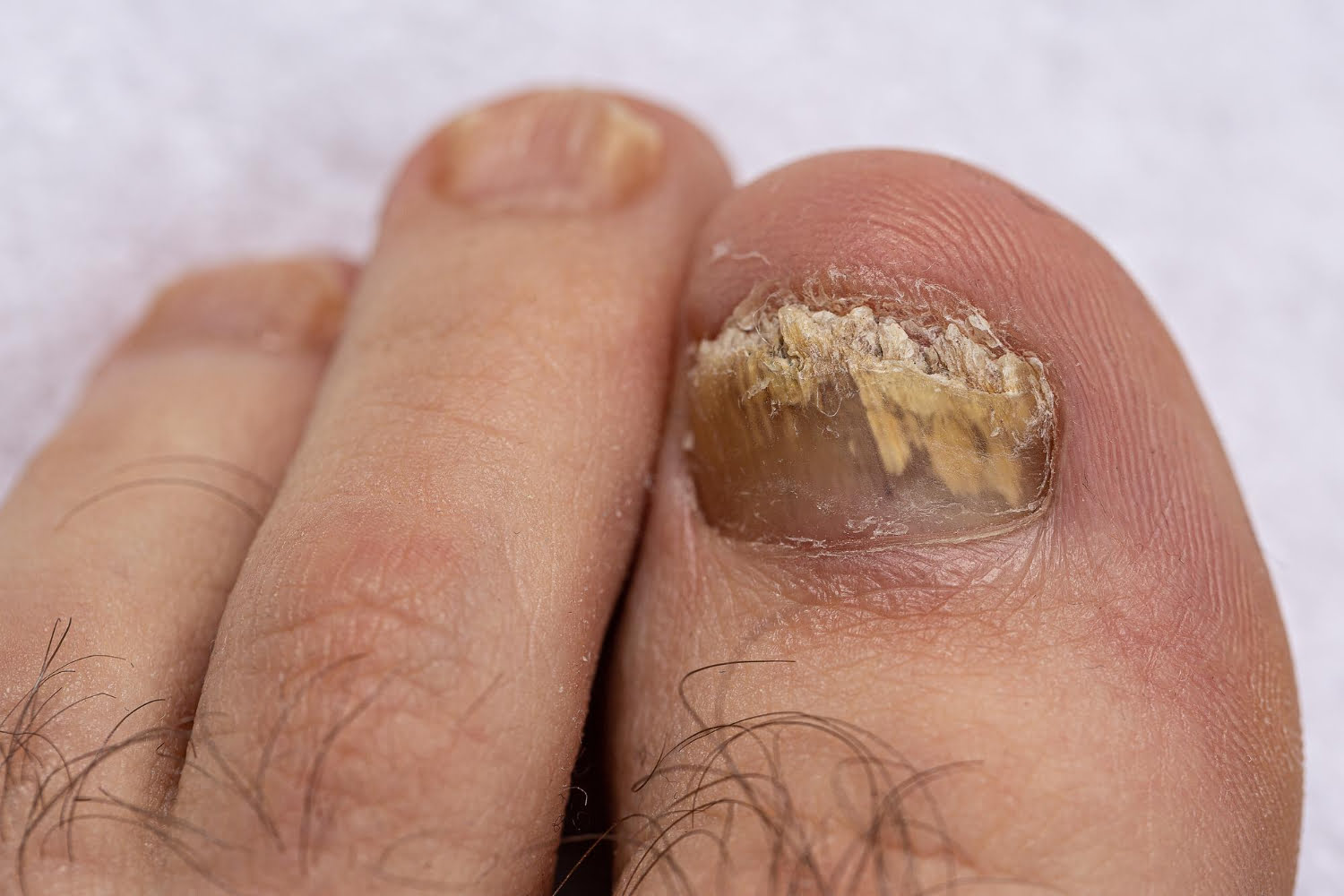A cracked or brittle nail, yellowed or browned, thick or hardened … It is usually easy to spot the symptoms of nail fungus. At first, nail fungus, its scientific name, is often painless. But as the infection grows, it can be so painful that it can be difficult to put on shoes. In the later stages, the fungal disease may be more resistant to different treatments. But where does it come from? How to get rid of it permanently? And what are the preventions? Answers in the article.
Nail fungus: where do they come from?
Fungi invisible to the naked eye are solely responsible for nail fungus. There are various ways to contract this fungal disease:
- Skin contact with other people’s personal items, such as towels or nail clippers.
- Skin contact with fertile environments for fungi, especially wet areas such as saunas, changing rooms and pool edges.
- Skin contact with a person who has a toenail fungus oa nail fungus.
- A cracked fingernail or skin.
- Wearing sweaty shoes or socks.
It is worth noting that anyone can get nail fungus. However, some are more likely to contract it, including:
- Those who have recently undergone an organ transplant.
- Those suffering from autoimmune or chronic diseases, such as HIV, psoriasis, diabetes or cancer.
- Those with an injured toenail or an existing fungal infection.
- Those with poor blood circulation.
- Those who live in a place where the climate is both hot and humid.
- Seniors.
- Always stressed people.
- Those undergoing antibiotic treatment.
- Women taking birth control pills.
Nail fungus: what are the different treatments?
Depending on the severity of the infection, there is an appropriate treatment:
– Mycosis of the nails: natural treatment:
If the case is mild, natural remedies can be an excellent option for curing nail fungus. One of the most effective is the blend of tea tree and wheat germ essential oils. If the infection recurs, we use a potion made from vegetable oils of the tea tree, lavender, aspic and cedar.
As for the dosage, two or three drops of the remedy should be applied directly to the infected part. We repeat the gesture once a day until the mycosis disappears completely. Treatment can take a long time, sometimes it can take up to more than a year.
– Antifungal nail polishes:
This solution is also intended for people with the infection, whose infection is still in the first stage. Recommended antifungal nail polishes include tavaborole, efinaconazole, ciclopirox and amorolfine. Knowing that the latter two are the most common against nail fungus and fungal development. They follow the same dosage as natural remedies.
– Oral treatments:
If the case is moderate or severe, oral treatments are needed. It is recommended to combine them with the solutions mentioned above to ensure great efficiency.
The most common oral medications to prevent nail fungus growth are terbinafine, itraconazole, griseofulvin, and fluconazole. They have proven to be very effective in curing nail fungus. However, they can produce serious side effects such as heart and liver failure. This is why the accompaniment of a doctor is necessary during the treatment.
– Nail removal
In case the infected person does not respond positively to other nail fungus treatments, this option becomes necessary. This involves surgically removing the infected nail or applying a product to allow it to fall off on its own.
In addition, it is worth emphasizing that this treatment technique differs from podiatric treatment, which consists in thinning thick nails. The latter is in fact a solution to improve the aesthetics of the infected area, but also to reduce the amount of small organisms responsible for mycosis.
– Nail mycosis: laser treatment
Undoubtedly, this is the answer to the question ” How to quickly cure toenail fungus? It is in fact a fast treatment, but also safe and effective. However, it is reserved for people who do not want to lose their nails and who have a tolerance to mycosis medications. It is used to apply the laser to the infected area to end the fungus and slow the development of the infection.
What are the right steps to prevent them?
You can avoid getting nail fungus by adopting good daily habits:
- Disinfection of all care accessories (files, nail clippers, etc.) is essential before and after use.
- In case of infection, the worn underwear must be sterilized. You have to boil them.
- Nails should always be clean and kept short.
- Avoid nail polishes prone to fungus.
- After washing your hands or feet, it is essential to dry yourself well, remembering the spaces between the fingers and toes.
- You should use a clean towel every day. Avoid using someone else’s.
- Always wear clean socks. Cotton models are preferred.
- Avoid tight shoes and tights.
- Sandals are mandatory in wet areas, especially in saunas, Turkish baths, swimming pools.
- Adopt a varied diet and prefer foods rich in probiotics.


